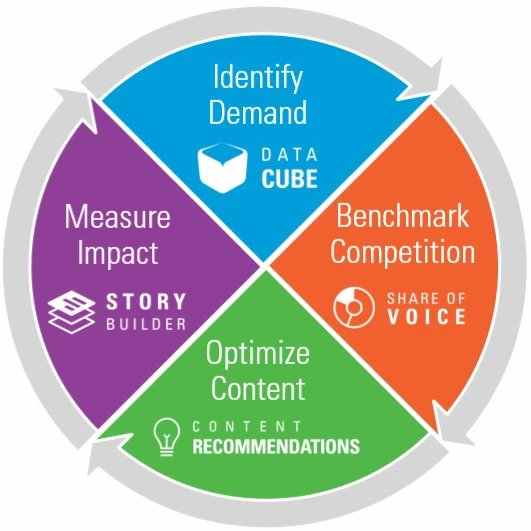Whether you’re starting a new website, rebranding, or recovering from a penalty, you need an SEO marketing strategy. The digital landscape and technologies are changing at an increasing pace. The channels and marketing prospects are varying so quickly and can leave behind some businesses that do not adjust. Begin SEO planning immediately to succeed in the SERPs.
SEO and content marketing require more sustained planning and well-organized production than other channels. If we just simply implement SEO by focusing on general commercial keywords, we’re missing the bigger picture that can lead to better ROI and rankings. Just understanding your SEO need is not enough.
What should I ask before I start my SEO marketing strategy?
Knowing the questions to ask before you plan your SEO marketing strategy can save you the headache—and dollars—down the road. Some questions to ask are:
- Where are we as a business?
- What are our primary and secondary goals?
- What amount of content at what cadence is needed?
- What is our budget?
- Do we have a team in-house or do we outsource?
- What channel will have the biggest impact?
- What tools do we need to create and measure success?
Even at the highest level, asking these questions is indispensable. The comprehension from analyzing the where, what, who, why and how of your business and audience can make the biggest difference toward your overall strategy.
Where does SEO fit into my marketing strategy?
As part of your larger marketing strategy, both traditional and digital, you might be wondering where SEO might fit in. You’ll want to stop thinking of marketing as separate buckets—SEO, especially, can encompass everything from traditional PR to social media marketing. In order to seamlessly incorporate SEO into your larger marketing plan, you’ll want to focus on a synchronized message across all media. Balancing the right mix of marketing for maximum ROI can be a complicated calculation, and the wrong mix can result in misdirected momentum and money.
Before you factor SEO into your marketing plan, understand where it can fill some of the holes in your process. Are you losing customers in the checkout process? Do sales drop seasonally? Are you getting edged out by a larger market? Understanding where an additional channel can assist your sales or organic visibility can help you incorporate SEO into your marketing mix.
How can SEO work with your existing PPC campaigns?
Your SEO marketing plan can work particularly well with an existing PPC campaign if planned correctly. When it comes to keyword targeting, your PPC campaigns can serve as a testing ground for SEO. Your AdWords campaigns can be leveraged in the wake of “Not Provided,” to see which keywords return the most value.
In all cases you want a strong organic position and performance, but paid search can help in the interim. Additionally, PPC ad headlines and copy can serve as testing for your foundational SEO—the ads with higher CTR should serve as your basis for meta titles and descriptions.
What is an SEO marketing plan workflow?
If you know you need to incorporate SEO into your marketing plan, you probably also know that a large part of that strategy will focus on content. The production of that content—targeting keywords for organic visibility while answering longer-tail queries for the user—has to be managed in accordance with your company size and scale.
The phases of the content marketing workflow contain:
- Identify demand
- Benchmark competition
- Optimize content
- Measure Impact
Your content producers can be in-house or outsourced, but the process shouldn’t change much in regards to workflow. From keyword and topic research to creation to optimization and promotion, you may have to scale across roles or hire freelancers. Either way, the content should be produced with your SEO management goals in mind—and each piece of content can have a different purpose.
Are you aiming to build awareness for a topic or convert customers? The language of your content needs to reflect this—which means your content producers should understand the goals of each piece they’re creating.
In some cases, depending on the size of your in-house team or outside agency, a lot of responsibilities can overlap. In order to build and manage an efficient workflow, you should make sure these overlapping responsibilities do not hinder the process or the end product.
Understand the workflow is less linear and more cyclical. Many marketers make the mistake of putting 100% of their resources into the first three phases and ignoring the phase of measurement. You should monitor the SEO success of your content—how it ranks, converts, and how behavior is conducted on each page. Once you’ve established the intent and production of content, you’ll want to kick off the workflow with an editorial calendar.
In addition to topic and content type, you should establish the publication date and channels for promotion. The editorial calendar assures that you are creating unique and well-researched content, instead of pushing blog posts just to have a full site, or unedited content that doesn’t hit your SEO goals. The calendar should incorporate your keyword lists, style guide, personas and more.
How do I track SEO marketing strategy success?
The challenge of tracking SEO success has evolved with the industry. From being primarily keyword-driven to “Not Provided,” Google Analytics alone has altered how we measure SEO success. But you wouldn’t eschew Nielsen data or paid search impressions, so tracking your SEO must be a crucial step in your integrated marketing strategy. Understanding your organic data can be key to executing and improving your marketing strategy as a whole. If you understand user intent in searching online, you can discover new ways to synchronize a message across multiple mediums.
Use a combination of your paid search data and tools like BrightEdge to combat ‘not provided’ reporting, or enable a search bar and Site Search in GA to discover the intent of your customers. Demographic tracking in SEO can also be extremely useful across all marketing mediums. The geographic location, gender breakdowns, and interest categories of your organic traffic can tell a story to develop your persona base for your overall strategy.
To track your SEO marketing strategy's performance, you want to establish your baseline metrics: organic visits, rankings, organic conversions. Once you have these initial numbers, you can track how your SEO strategy affects these numbers.
What is marketing attribution and why does it matter?
Tracking SEO is important on its own, but what about its effects on your plan and other marketing channels?
Marketing attribution is the process of looking at how your customers move through your buyer's journey. It's about assigning value to the channels that influenced a conversion, whether it’s a soft lead or final purchase.
However, attribution in marketing is difficult across digital and traditional platforms. Even reporting can be skewed—direct traffic being attributed to organic, and referral traffic being attributed to the wrong mediums. But any business, large or small, must be able to determine the value of their online efforts.In e-commerce specifically, there are many different channels online users can interact with before a final purchase. They might see an advertisement of TV, before searching a business name organically, then reading reviews of the product or service. They might click on a paid search ad, then return via direct traffic or through a social media ad.
How do attribute value to the organic marketing channel?
Instead of relying on First or Last Interaction models, the increase in channels demands a multi-touch attribution model to understand your SEO value in converting visitors. It is vital to view all interactions in order to allocate the correct budget to each channel. Google Analytics released a beta version of multi-channel funnels in 2014—a tool that is still underused by most businesses. Depending on the level of brand awareness, organic interaction is frequently undervalued because it is closer to the top of the funnel, and mostly functions as a channel for research. Once that initial query is made, users will typically return to convert with a branded search or direct visit.
What does this mean for your SEO marketing plan?
If you’re a new business, brand awareness is crucial to that first step in attribution. Focusing on content that answers your audience’s needs and making sure you’re established across social media and review sites will be an important step. If you’re an established business, measuring your attribution models and focusing on that first interaction with organic search will be important in understanding its role.
How does SEO contribute to revenue?
Once you understand how SEO functions in a multi-attribution model, you can begin to track its value in conversions. It’s easy to measure SEO success by organic visits and rankings, but that doesn’t exactly translate to dollars at your next shareholder meeting. Translating those increased visits and rankings to conversions and revenue is a vital part of the SEO marketing strategy. 
To understand the value of SEO metrics in terms of revenue and investment, it’s worth analyzing them in terms of your sales funnel. Rankings, impressions, and traffic are, as we noted in attribution, toward the top of the funnel. Conversions (lead forms, purchases, phone calls, etc.) are at the bottom. The key is to understand how the beginning stages influence the end stages for overall revenue.
Looking at impressions vs. clicks on organic search will provide an important picture for your SEO budget and efforts. Are you consistently ranking and gaining impressions for a query but no clicks? Maybe your content production and optimization are better spent elsewhere. After all, if they don’t click they can’t convert.
Are you ranking for terms that are relevant to your business or content, or are you ranking for queries that don’t help your potential customer? Understanding how your user behaves before they even get to your site will help determine how to allocate your SEO marketing plan's dollars. Once someone arrives on your site from organic search, getting him or her to convert is another step in measuring your SEO success.
Here’s where conversion rate optimization comes in—a strategy that relies heavily on analyzing the data of user behavior. Does your content answer their question? That might not be good enough to get them to buy—even at a first-touch stage.
Incorporating CRO into your SEO content can draw a (somewhat) linear line from your SEO marketing plan to revenue. This can pose an issue for sites that are service based, or product based sites that are not E-commerce. It’s easier to track an organic visit to checkout (without factoring in multi-touch) and seeing actual dollars and numbers comparisons. But measuring the amount of leads vs. sales (for a non-ecommerce site) can be extremely helpful, even if you can’t make a 1:1 comparison.
On the other side of the funnel, it’s helpful to understand where revenue is dropping to see if your holes can’t be filled with additional SEO budget. If your Display campaign is eating into your quarterly budget and returning next to no conversions, would you be better served cutting that campaign for more SEO lead generating content? Here is where it helps to test, measure, and test again.
How do I become an SEO?
Being an SEO now is multi-faceted. It’s no longer just filling in meta titles, creating keyword lists, or building directory links. Since SEO is transitioning to digital PR and inbound marketing, the role of an SEO coordinator or agency has to change as well.
In fact, as many responsibilities can be bundled under the SEO umbrella, as a job it is becoming more segmented and specialized. There are still jobs—many, many jobs—for strictly “SEO coordinators,” but you’ll also see a burgeoning list of positions for “Outreach Specialist,” or “Technical SEO expert,” or “Conversion Rate Optimization Analyst,” or “Content Creation Manager.”
While it’s always good to be a jack-of-all-trades, it’s becoming more and more important to be a master of some. Getting started in SEO and learning to create SEO reports can be a long process, but ultimately rewarding if you’re someone who likes to keep learning and growing in a job.
If your interest is more  technical than creative, taking classes or reading source material can be a good first step. Even if you’re not just starting out, understanding the role you want to take in your SEO marketing strategy is important, and honing your skills is a must. Creating your own blog or website and implementing SEO is better than any CV—especially if you see great results.
technical than creative, taking classes or reading source material can be a good first step. Even if you’re not just starting out, understanding the role you want to take in your SEO marketing strategy is important, and honing your skills is a must. Creating your own blog or website and implementing SEO is better than any CV—especially if you see great results.
Finding the key players in SEO is easy. Becoming a part of the community can be a little tougher. Creating an SEO blog and getting involved with social media groups and discussions can be a good jump-start, or escalation of your SEO career. Your role as an SEO is to provide, but also demonstrate, value for the bottom line.
No matter what facet of SEO you work in, understand how to measure results and analyze data early on. It’s also beneficial to understand how other mediums and channels can work with and influence your SEO results, so reading up on paid search, social media marketing, and visual marketing is important.
How much should be spent on executing an SEO marketing plan?
Outside of salaries, monitoring the industry spend within SEO can help set your marketing strategy and budget. While an in-house team should be set by the local or national averages, an agency spend is harder to budget. SEO agencies can offer different forms of services and payment:
- Monthly Retainer: The client pays a set fee each month for a previously established scope of work. These arrangements typically include regular reporting, keyword research and strategy, on-site optimization, and link building.
- Fixed-Price Services: This option can be beneficial for a new company, or a business switching services or agencies, to test out a potential relationship. This most likely includes auditing and reporting that is priced out as a single service.
- Project-based Pricing: Project fees are like contract services with fixed-pricing, except they are more specific in their end goals. Whereas fixed-price services usually include auditing, the project-based contracts will be the next step in correcting or optimizing findings, or creating a specific piece of content.
- Hourly consulting: This typical model is an hourly fee in exchange for services or information.
SEO agencies use most or all of these payment models to provide the most flexibility for a wider client base. So, what should you expect to pay? A recent industry report found the range of the costs of each payment model:
- Monthly retainer: $750-5,000 per month. The amount depends on the size of your business and the services delivered.
- Contract services at fixed prices: this model will vary. Standard services include SEO writing ($0.15-$0.50/word), content auditing ($500-$2,500), backlink auditing ($500-$2,500), and social media setup ($500-$3,000).
- Project-based pricing: this also varies based on the scope of the project. Creating content like E-books can range from $500 to $1,000, where bigger projects like a site redesign can be $10,000 to $20,000.
- Hourly consulting rate: $100-300 per hour.
In addition to cost, be on the lookout for two important things: results and reporting. No matter what pricing model you use, make sure the work meets the original agreement and the agency is being held accountable for their SEO services.
How can I use BrightEdge in my SEO planning?
The difference between in-house and agency SEO marketing—outside of costs—is the tools and training used by your company’s SEO specialists. You have to be mindful of budgeting, but it’s crucial to vet the tools at your disposal for the best results. Since content should be a big, if not the biggest, focus of your SEO marketing plan and strategy, a platform like BrightEdge is necessary in tracking your efforts. You get the added bonus of competitive research, Google Suite integration, and link building tools to supplement the core keyword research and content strategy tools.
In addition to the research stage of your SEO marketing strategy, BrightEdge can also help manage workflows for either an in-house team or an agency. The key takeaway from this platform is seeing results in almost real-time—checking off tasks and watching the direct results in traffic or ranking can be vital to showing results to your CEO. Platforms like BrightEdge make it simple to take your SEO marketing strategy from the planning stages to measuring and reporting, and also do a comprehensive website audit.
